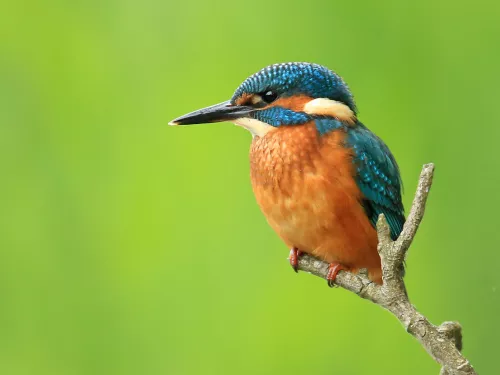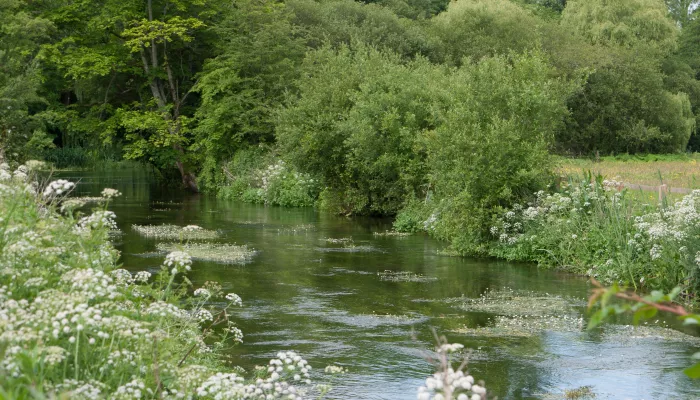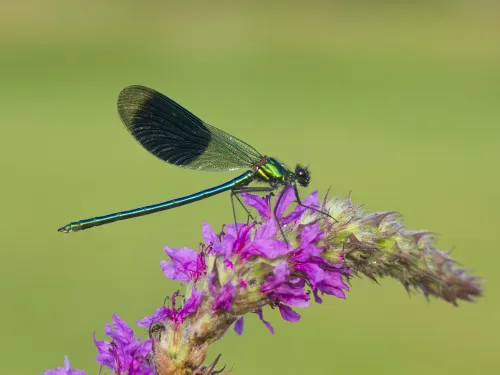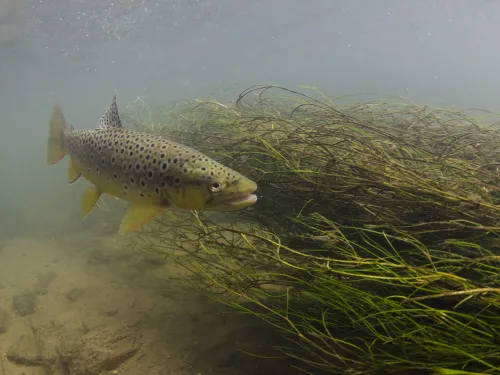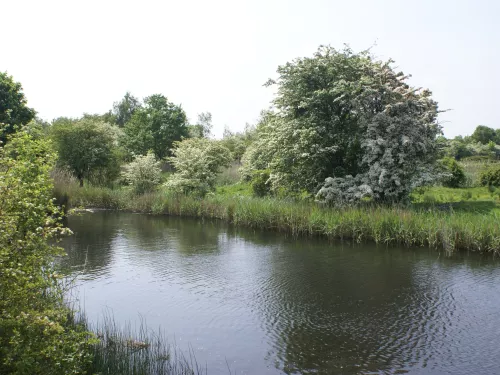What is a chalk stream?
Chalk rivers are a particularly lovely type of lowland river characterised by clear water and a diverse flora. All have been modified in some way, usually for milling, fishing, irrigation or watercress beds, but despite weirs, impoundments and abstraction, the best chalk rivers still support a fine aquatic flora and a diversity of invertebrates and fish: England’s chalk rivers and streams are world famous for trout and salmon fishing, and the river corridor can often support a rich fen vegetation. Water-crowfoot plants can be found in rivers running over sandstones and harder rocks in other parts of the country including the uplands.
Why are chalk streams & rivers like this?
Chalk rivers emerge from the chalk aquifer, so the very pure water is rich in minerals and remains at a fairly constant temperature year-round. This lets diverse aquatic plants grow, including various species of water-crowfoot and water star-wort. The plant diversity and good water quality supports many invertebrate and fish species.
Bullhead, brook lamprey and Atlantic salmon breed in clean gravels, and some chalk rivers provide a refuge for the white-clawed crayfish, which is seriously threatened by the introduction of non-native species of crayfish and the diseases they harbour. Some headwaters include winterbournes, streams that naturally run dry by late summer when low rainfall has not recharged the aquifers.
Distribution in the UK
Only 200 chalk rivers are known globally, 85% of which are found in the UK in southern and eastern England. Classic examples include the rivers Itchen and Avon in Wessex and the river Wensum in Norfolk.
What to look for
In early summer look out for clouds of mayflies, which emerge synchronously to lay eggs, having lived for most of their life underwater as nymphs. Look out also for a range of dragonflies. Bullhead can sometimes be seen under stones (be sure to replace any moved stones). Along the course of winterbournes, look for pond water-crowfoot, with stream water-crowfoot in the middle section and river water-crowfoot in the lower reaches.
Conservation
Despite their unique characteristics, chalk rivers have fared badly and many are in poor condition. Some chalk rivers run dry in the summer when too much groundwater is drawn (over-abstraction), while largely arable catchments have particular problems with nutrient enrichment. In some places, intensive fisheries management has resulted in regular weed cutting, stocking with reared fish and bank stabilisation. However, river restoration projects focusing on chalk rivers are underway, and also include restoring adjacent habitats like floodplain grazing marsh.
